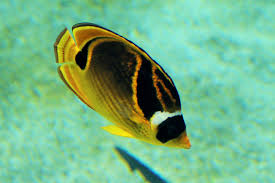
Cats are known for their playful nature, often exhibiting quirky and entertaining behavior that brings joy to their owners. This article delves into the reasons why cats become playful, considering both genetic and environmental factors that contribute to their lively and amusing characteristics.
**1. Genetic Predisposition:**
– **Kitten Play:** Playfulness often begins in kittenhood. Cats may inherit a playful disposition from their parents or ancestors.
– **Natural Instincts:** Play is a natural instinct for cats. Kittens play to learn and develop crucial skills for survival, such as hunting and stalking.
**2. Hunting Instinct:**
– **Predatory Drive:** Cats are natural hunters. Their play behavior often mimics hunting actions, such as pouncing, stalking, and batting at objects or toys.
– **Energy Release:** Play allows cats to release excess energy, especially in indoor environments where they may have limited opportunities for real hunting.
**3. Social Interaction:**
– **Bonding and Communication:** Play is a way for cats to bond with their owners and other pets. It serves as a form of communication and mutual understanding.
– **Teaching and Learning:** Through play, kittens and young cats learn valuable social and physical skills, such as appropriate behavior and boundaries.
**4. Curiosity and Exploration:**
– **Inquisitive Nature:** Cats are naturally curious. They explore their environment through play, interacting with objects, climbing, and investigating.
– **Mental Stimulation:** Play provides mental stimulation, keeping their minds engaged and preventing boredom.
**5. Environmental Enrichment:**
– **Stimulating Toys:** Providing a variety of stimulating toys and play opportunities can encourage a cat’s playful behavior.
– **Interactive Play:** Interactive play with owners, including using feather wands or laser pointers, engages their hunting instincts.
**6. Stress Reduction:**
– **Stress Relief:** Play helps cats reduce stress and anxiety. Engaging in playful activities can be a healthy way for them to cope with changes or challenges.
**7. Exercise and Physical Health:**
– **Physical Fitness:** Playful cats are often more physically fit. Regular play helps maintain a healthy weight and overall physical health.
– **Joint Health:** Active play can help with joint health and flexibility, especially in older cats.
**8. Individual Personality:**
– **Unique Traits:** Each cat has its own unique personality. Some cats may be more naturally playful, while others are calmer or more reserved.
**9. Age and Life Stage:**
– **Kitten Playfulness:** Kittens are typically the most playful, while playfulness may decrease with age. However, older cats can still enjoy play.
**10. Breed Differences:**
– **Breed Characteristics:** Some cat breeds are known for their playful nature. For example, Bengal cats are often more active and playful than other breeds.
In conclusion, the playful nature of cats is influenced by a combination of genetic predisposition and environmental factors. Understanding and encouraging their playfulness can lead to a happier and healthier cat. Whether it’s chasing a feather toy, pouncing on an imaginary prey, or engaging in interactive play with their owners, the antics of playful cats bring joy and entertainment to households around the world.










